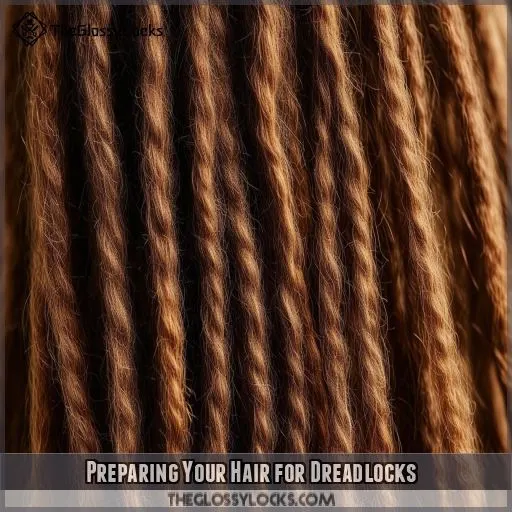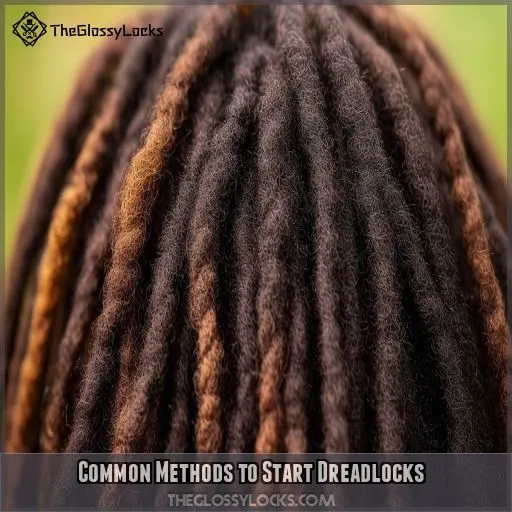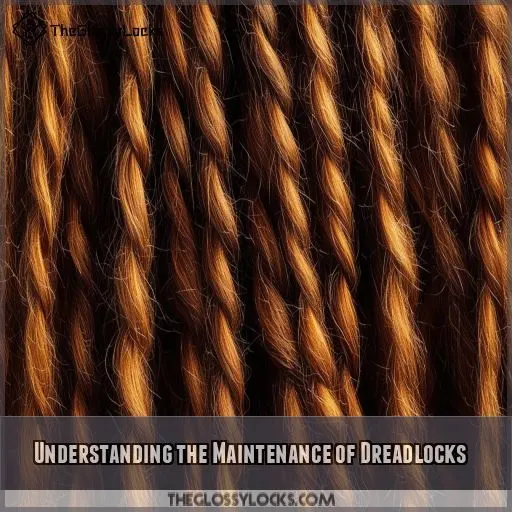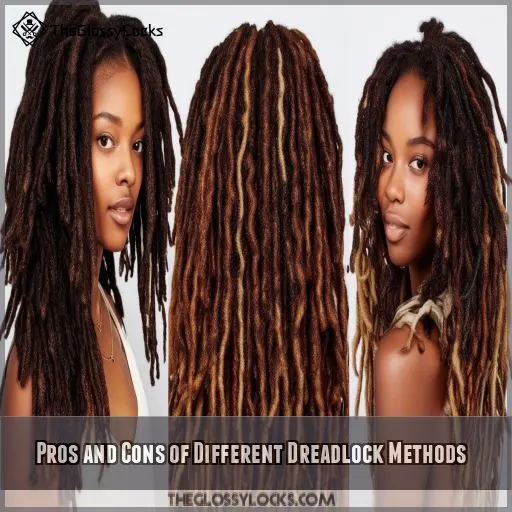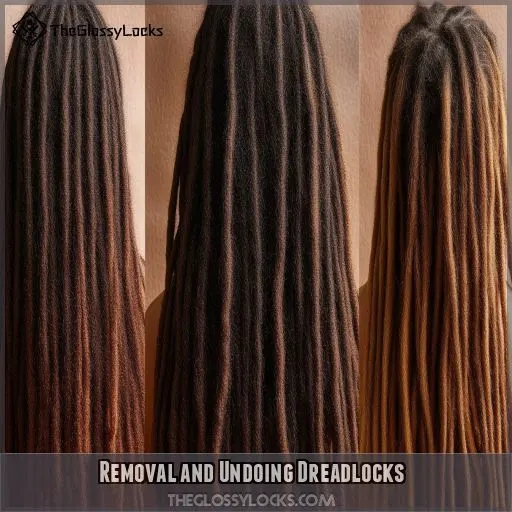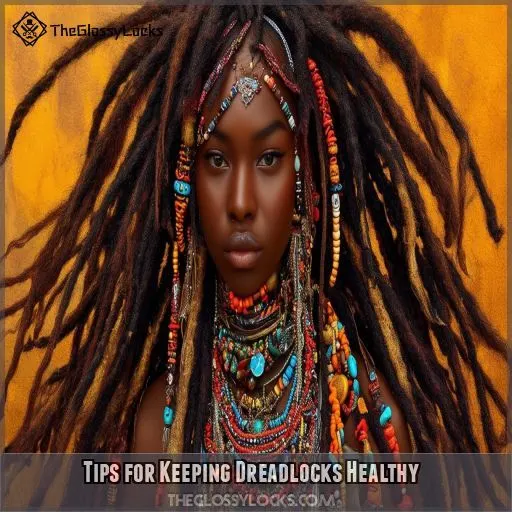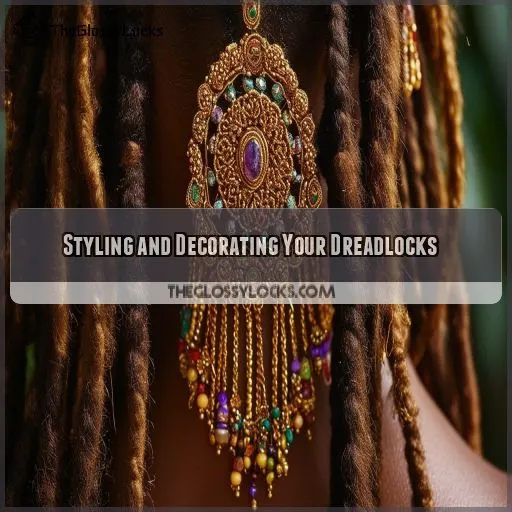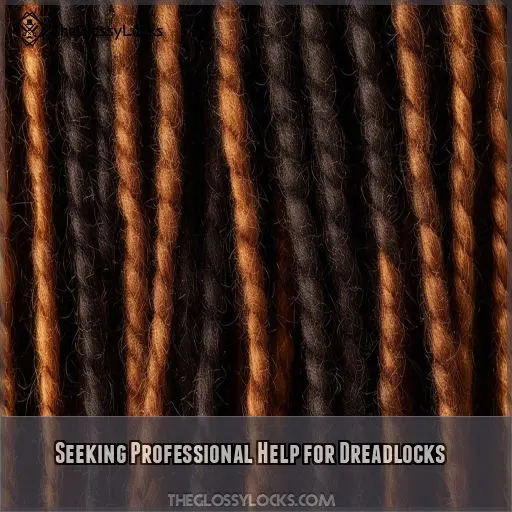This site is supported by our readers. We may earn a commission, at no cost to you, if you purchase through links.
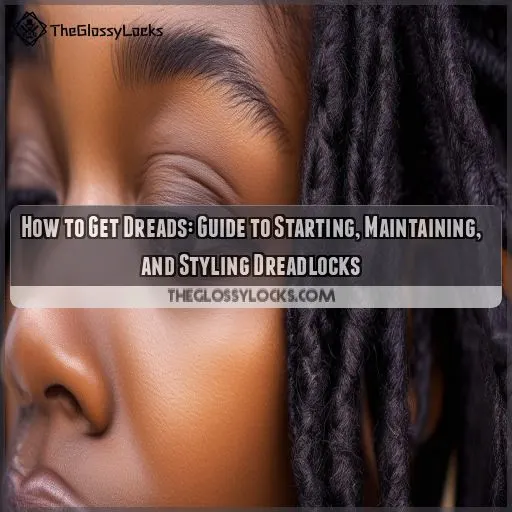 Channel your untapped potential in our comprehensive step-by-step guide on how to get dreads.
Channel your untapped potential in our comprehensive step-by-step guide on how to get dreads.
In this article, we will help you either start, maintain, or style dreadlocks—be it for an enthusiast’s needs or someone completely new to the field.
From the history of this age-old hairstyle to expert tips on keeping your locks healthy, we have got you covered.
The freedom and individuality that dreadlocks present are waiting for you right now.
Table Of Contents
- Key Takeaways
- How to Get Dreads?
- What Are Dreadlocks and Their History?
- Preparing Your Hair for Dreadlocks
- Common Methods to Start Dreadlocks
- Understanding the Maintenance of Dreadlocks
- Pros and Cons of Different Dreadlock Methods
- Removal and Undoing Dreadlocks
- Tips for Keeping Dreadlocks Healthy
- Styling and Decorating Your Dreadlocks
- Seeking Professional Help for Dreadlocks
- Frequently Asked Questions (FAQs)
- Conclusion
Key Takeaways
- Dreadlocks are more than just a hairstyle—they’re a whole vibe, steeped in history and dripping with individuality.
- Starting dreads is like a blank canvas—you can go the backcombing route, twist it up, or let nature take the wheel.
- Keeping your dreads happy and healthy is like tending to a garden—use the right products, give them a good wash, and don’t forget to feed them with natural oils.
- If you’re feeling stuck or want to take your dread game to the next level, don’t be shy—reach out to a pro for some expert advice.
How to Get Dreads?
To get dreads, start by washing your hair with a clarifying shampoo and skip the conditioner.
Once dry, section your hair into 1-inch squares and choose a method: backcombing, twisting, or going natural.
Backcombing requires a steel comb and dread wax, while twisting involves applying locking wax and twisting sections counterclockwise.
For afro-textured hair, letting hair naturally form dreads can work best.
Maintain your dreads by washing with dreadlock shampoo, rolling them daily in the beginning, and keeping your scalp healthy.
Patience is key, as it’ll help your dreads mature beautifully.
Stick around to uncover more tips for healthy and stylish dreads!
What Are Dreadlocks and Their History?
There is really some rich history attached to dreadlocks, evidence of which can be traced back hundreds and thousands of years in several cultures and religions. It’s undoubtedly one of the instantly recognizable hairstyles affiliated with spiritual practices, rebellion, and nature.
This ranges from the very early instances of Rastafarianism down to the latest fashion statement—dreadlocks signify freedom, expression of self, and dedication to natural hair.
Be it through cultural significance or merely their simple, striking aesthetic, researching the history of dreadlocks gives important context as one begins the journey of having them.
Preparing Your Hair for Dreadlocks
Prepping your hair is the most important step in creating dreadlocks. Start by washing your locks using a clarifying shampoo to get rid of all residue. Let it dry without conditioner. Brush out any tangles that may be present, completely. To get the best results:
- Apply hair oil to protect each strand.
Section your hair carefully into 1-inch squares.
- Use hair clips to keep the sections of loose hair out of the way.
- For natural afro-textured hair, use finger rolling for the shape preferred.
This establishes a good base for beautiful, natural dreadlocks.
Common Methods to Start Dreadlocks
There are several common methods to start dreadlocks, each with its own unique approach. The backcombing, twisting, and natural methods all offer different techniques for initiating the dreadlock formation process.
Backcombing Method
To begin the dreadlocks with a backcombing technique, tools for dreadlocks, a steel comb, and elastic bands are required.
Firstly, divide the hair into small squares. Then, firmly backcomb each section towards the scalp using your fingers to roll them down in order to form knots; hold them at the end with a band.
Apply dread wax to lock the shape.
This is applied in various dreadlock styles and textures.
Twisting Method
For the twisting method to initiate dreads, follow these steps:
- Square Partition of Hair: Divide hair into small squares.
- Product Application: Use some oil with locking wax, depending on your hair texture.
- Twist and Coil: Twist each section counterclockwise, then twist strands together.
This entails the need for consistency and correct twisting frequency. With regular maintenance, these neatest dreads become strong for any hair length and texture.
Natural Method
The Natural Method is your go-to if you have afro-textured hair. Start with clean hair—skip the brushing and let nature take over. Your hair will gradually form dreads, though the growth pattern can be unpredictable. Regularly check scalp health and maintain hair hygiene. Minor adjustments using crochet or rubber bands can help shape your freeform dreads over time.
Understanding the Maintenance of Dreadlocks
Proper care will have one’s dreadlocks looking fresh and healthy, and even extend their lifetime.
Dreadlock shampoo is a must for cleaning the scalp and dreads.
During the "teenage" stage of dreads, they need to be rolled every day to maintain their shape.
Mature dreadlocks require care directed more on the scalp, with a separation of the loose hair sections from time to time.
Find dreadlock products that work best on your hair by experimenting.
Allow for your dreads’ transition from the "teen" stage to the "mature" stage since it only needs maintaining consistently so they grow out healthy.
Pros and Cons of Different Dreadlock Methods
When choosing a method to start dreadlocks, consider the knotting techniques, hair texture, styling flexibility, method complexity, and time investment.
Backcombing is effective but time-consuming and may damage hair.
Interlocking, using a crochet hook, offers neat results but can be complex and painful.
The twisting method with dread cream or locking gel provides style control but needs frequent maintenance.
Comb coils are ideal for afro-textured hair but require precision.
Each method’s pros and cons depend on your hair type and maintenance willingness.
Removal and Undoing Dreadlocks
Removing and undoing dreadlocks requires patience and care to avoid hair loss and heat damage.
If you have extensions, start by removing them first. Use water and generous conditioner to soften the dreads, and carefully pick them apart with a comb.
Chemical treatments can expedite the process but may damage hair. For stubborn dreads, you might consider shaving your scalp and starting fresh.
Be cautious as some methods can cause significant stress to the roots and overall hair health.
Tips for Keeping Dreadlocks Healthy
Keeping your dreadlocks healthy is essential. Regular maintenance and proper care can prevent issues and promote hair health.
- Dreadlock nourishment: Use natural oils and special dreadlock creams to keep them moisturized.
- Scalp cleansing: Cleanse your scalp regularly with dreadlock shampoo to prevent buildup.
- Product selection: Choose residue-free products that won’t clog your dreads.
Styling and Decorating Your Dreadlocks
To keep your dreadlocks looking fresh and unique, consider stylish options like dreadlock accessories and jewelry. You can also try wrapping sections with colorful threads or adding dreadlock extensions for length and volume. Explore different dreadlock colors to express your personal style. Here are some ideas:
| Style | Description |
|---|---|
| Beads | Adorn individual locks |
| Wraps | Use colorful threads |
| Extensions | Add length and volume |
| Jewelry | Decorative metal pieces |
Experiment and express yourself freely while ensuring your dreads stay healthy.
Seeking Professional Help for Dreadlocks
Seeking professional advice in dreadlocks can make much of a difference in one’s journey. Book an appointment for a consultation regarding hair type and the style to be achieved, together with suitable methods.
Professionals advise on the best products to be used on dreadlocks to ensure great results. With professional advice, you’ll avoid common mistakes and achieve a well-polished look.
Regular appointments will maintain and shape your locks to keep them healthy and vibrant. Smooth and successful dreadlocks journeys are achievable through embracing available expertise.
Frequently Asked Questions (FAQs)
How do you start dreads?
Start dreads by washing hair without conditioner, sectioning it into 1-inch squares, and using backcombing, twisting, or natural methods. Consistent maintenance, such as rolling and using appropriate products, is essential for healthy development.
How to get dreadlocks naturally?
To get dreadlocks naturally, simply stop brushing and combing your afro-textured hair. Over time, your hair will begin to mat and form locks on its own. Just be patient and let nature take its course!
Can anyone start dreads?
Yes, anyone can start dreads with the right method based on their hair type. Techniques like backcombing, twisting, or using a crochet hook work for various hair textures, while naturally forming dreads suit afro-textured hair.
Can dreadlocks be undone?
Yes, dreadlocks can be undone, but it’s a lengthy process. You’ll need to saturate them with water and conditioner, then carefully comb them out. Be patient and gentle to avoid damaging your hair.
How long should my hair be for dreads?
Let it all go wild—you’ll need a minimum length of 4 to 6 inches before you can start making dreadlocks. Embrace freedom and individuality brought about by such a change in style, and let those locks free.
Can I get dreads with thin hair?
Yes, you can get dreads even if your hair is thin. Have smaller sections so that your dread appears fuller. Do this with a crochet hook or the backcombing method for a better result, and keep them neat with some regular maintenance.
Do I need special products for dreadlocks?
Some of the few basic things needed to create dreadlocks are locking gel, dread wax, and residue-free shampoo. These will aid in keeping up with the look, cleaning the dreadlocks, and ensuring they’re intact – it will be a walk in the park.
Are dreadlocks sanitary?
Dreadlocks can be maintained in a sanitary manner with proper care. Use dreadlock-specific shampoos, regularly wash your scalp, and avoid sharing hair accessories to prevent the spread of bacteria or fungus. With diligence, dreadlocks can be a hygienic hairstyle.
Can short hair be dreaded?
Absolutely, you can dread short hair! Use the backcombing or twist and rip methods to start your dreads when your hair is at least three inches long. With perseverance, your dreads will flourish and grow.
Conclusion
Funny, something so ancient like dreadlocks can feel extremely modern, right?
With our guide on how to get dreads, you’re more than equipped to start, maintain, and style those locks.
Whether you’re a total newbie or looking to really upgrade your dread game, the adventure’s totally yours.
Take on that journey of dreadlocks confidently and in style, keeping them healthy with expert tips for maintaining them, experimenting with looks, and knowing when to hit up the professional.


